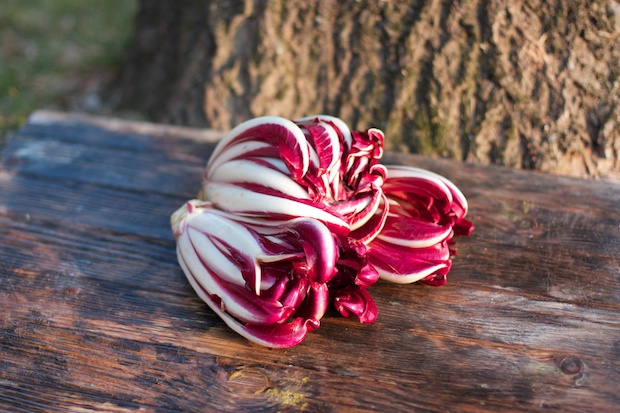This post is also available in: English
La storia di questo ortaggio lega assieme l’orto con il giardino.
Tra il 1860 e 1870, un esperto di giardini viene chiamato presso “Villa Palazzi” (ora Taverna) a Dosson di Treviso, per costruire un giardino all’inglese.
Il belga “Van Den Borre” durante l’allestimento di questo giardino sperimenta la tecnica dell’imbianchimento (molto nota e applicata nel suo paese per la cicoria belga) su cespi di radicchio rosso (cicorium intubus). Nasce così il Radicchio di Treviso denominato anche “Rosa d’inverno”.
La prima mostra dell’ortaggio viene realizzata nel dicembre del 1899.

Il radicchio si trova in commercio tra dicembre e marzo. Si divide nelle qualità precoce e tardivo.
Ha proprietà depurative e lassative, facilita la digestione, la funzione epatica e stimola la secrezione biliare. E’ ricco di vitamina A e C, B1 e B2 e in piccola parte anche PP.
Abbonda di sali minerali.
Oggi si producono 11.000 q.li di radicchio che vengono venduti in Italia, Stati Uniti, Francia e Germania.
Quando si acquista il radicchio di Treviso si deve fare attenzione al colore rosso scuro con le foglie croccanti, la radice deve essere ancora `chiara, priva di macchie.
Può essere consumato crudo, spezzando le foglie in un’insalata, o cotto alla piastra, stufato, in pasticci e risotti o accompagnato a pesce e carne in fantasiose ricette.
Si conserva in frigo avvolto nella carta anche per 4/5 giorni.



